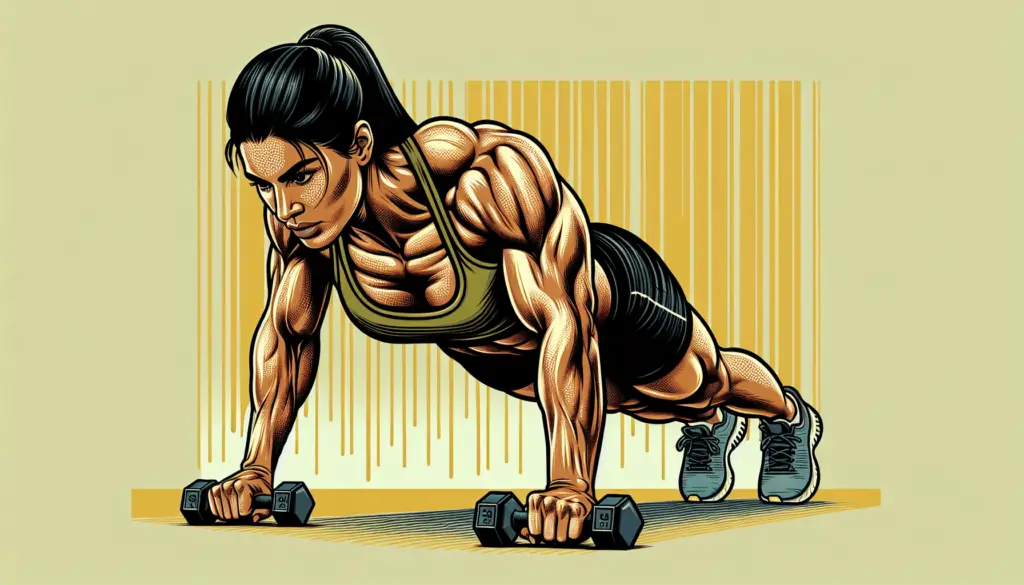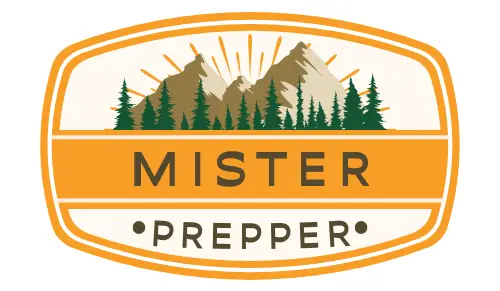Have you ever wondered how you would fare in a survival situation? Whether it’s a natural disaster, economic collapse, or any other emergency, being physically fit and ready can make a significant difference in your ability to survive. In this article, we will explore the fundamentals of prepper fitness, focusing on staying physically ready for any situation that may arise.

Importance of Physical Fitness for Preppers
Staying physically fit as a prepper is essential for a variety of reasons. From being able to carry heavy loads to having the stamina to walk long distances, your fitness level can impact your survival in an emergency. By staying physically fit, you increase your chances of avoiding injury, illness, and exhaustion in a crisis.
Are you ready to take your prepper fitness to the next level? Let’s dive into the fundamentals that will help you stay physically ready for any situation.
Cardiovascular Endurance
Cardiovascular endurance is crucial for preppers, as it affects your ability to move efficiently and cover long distances on foot. Whether you need to evacuate an area quickly or hike to a safe location, good cardiovascular endurance can make the difference between reaching safety and being stranded.
To improve your cardiovascular endurance, focus on activities like running, cycling, swimming, and hiking. Start slow and gradually increase the intensity and duration of your workouts to build up your endurance over time. Remember, consistency is key when it comes to improving your cardiovascular fitness.
Strength Training
Strength training is another vital component of prepper fitness, as it helps you build the physical strength needed to perform essential tasks in a crisis. From lifting heavy objects to building shelters, having good strength can be a game-changer in survival situations.
Incorporate strength training exercises like squats, deadlifts, push-ups, and pull-ups into your workout routine. Bodyweight exercises are great for preppers, as they require minimal equipment and can be done anywhere. Aim to work all major muscle groups at least twice a week to maintain and build strength.
Flexibility and Mobility
Flexibility and mobility are often overlooked aspects of prepper fitness, but they are crucial for overall physical health and functionality. In an emergency, being able to move freely and without pain can help you navigate obstacles, perform tasks more efficiently, and reduce the risk of injury.
Include stretching exercises in your prepper fitness routine to improve flexibility and mobility. Focus on major muscle groups like the hamstrings, quadriceps, back, and shoulders. Yoga and Pilates are excellent practices for enhancing flexibility and mobility while also improving balance and core strength.
Balance and Coordination
Balance and coordination are essential skills for preppers, as they can help you navigate challenging terrain, avoid falls, and perform tasks with precision. Whether you’re crossing a river on a fallen log or scaling a rocky hillside, good balance and coordination can keep you safe and steady in unpredictable situations.
Incorporate balance and coordination exercises into your workouts to improve these skills. Activities like standing on one leg, walking on uneven surfaces, and practicing agility drills can help enhance your balance and coordination. Remember to challenge yourself gradually and practice consistently to see improvement.
Endurance and Stamina
Endurance and stamina are critical for preppers, as they determine how long you can sustain physical activity without fatigue. Whether you’re carrying supplies, building a shelter, or trekking through rough terrain, having good endurance and stamina can help you keep going when the going gets tough.
To improve your endurance and stamina, include high-intensity interval training (HIIT) in your workouts. Alternating periods of intense exercise with brief rest intervals can help boost your cardiovascular fitness and increase your endurance. Additionally, focus on activities that mimic the demands of survival situations, such as carrying a heavy backpack or hiking with weighted gear.
Nutrition and Hydration
Proper nutrition and hydration are vital components of prepper fitness, as they fuel your body for physical exertion and support overall health and well-being. In an emergency, having a well-rounded diet and an adequate supply of clean water can be essential for staying strong, focused, and resilient.
Ensure that your prepper pantry is stocked with nutrient-dense foods that provide essential vitamins, minerals, and macronutrients. Focus on shelf-stable options like canned goods, dried fruits and nuts, and whole grains. Stay hydrated by drinking plenty of water throughout the day, especially if you’re engaging in physical activity or in a hot climate.
Mental Preparedness
While physical fitness is crucial for preppers, mental preparedness is equally important for surviving an emergency. Maintaining a positive mindset, staying calm under pressure, and adapting to changing circumstances can make a significant difference in your ability to cope with challenges and make informed decisions in a crisis.
Practice stress-relief techniques like deep breathing, meditation, and mindfulness to build mental resilience and emotional stability. Visualize different scenarios and develop contingency plans to prepare yourself for unexpected situations. Remember that mental strength is just as essential as physical strength when it comes to prepper fitness.
Equipment and Gear
Having the right equipment and gear is essential for prepper fitness, as it can enhance your physical capabilities and increase your chances of surviving in an emergency. From high-quality hiking boots to a reliable water filter, investing in the right tools can help you navigate challenges, stay safe, and maintain your health and well-being.
Create a prepper gear list that includes essential items like a first aid kit, fire starter, multi-tool, and emergency shelter. Test your gear regularly and familiarize yourself with how to use each item properly. Consider your individual needs and preferences when selecting equipment and gear, and focus on items that are durable, lightweight, and versatile.
Training and Skills Development
In addition to physical fitness and mental preparedness, acquiring relevant training and skills can further enhance your readiness for emergencies. From basic first aid to wilderness survival techniques, having practical knowledge and hands-on experience can help you respond effectively to a wide range of situations and challenges.
Seek out training opportunities in areas like CPR, navigation, fire-building, and self-defense. Practice essential skills like knot tying, shelter construction, and foraging for food in a safe environment. Consider joining a local survival group or taking a wilderness survival course to learn from experienced instructors and like-minded individuals.
Conclusion
Staying physically ready as a prepper requires a combination of physical fitness, mental preparedness, proper nutrition, and the right gear and skills. By focusing on the fundamentals of prepper fitness and incorporating them into your daily routine, you can increase your chances of surviving an emergency and thrive in challenging situations.
Remember that prepping is a lifestyle, not a fad. Embrace the principles of preparedness, self-reliance, and resilience, and strive to become the best version of yourself both physically and mentally. Stay committed to your prepper fitness goals, stay informed about potential threats and hazards, and stay connected with your community to build a strong support network.
Are you ready to take the next steps towards becoming physically ready as a prepper? Start by assessing your current fitness level, setting specific goals, and creating a realistic plan for achieving them. Stay motivated, stay focused, and stay prepared for whatever may come your way. Your future self will thank you for it.
